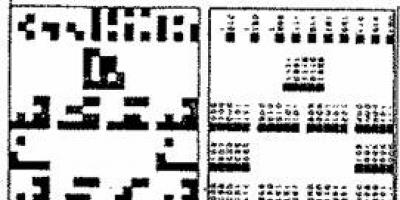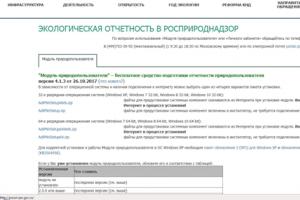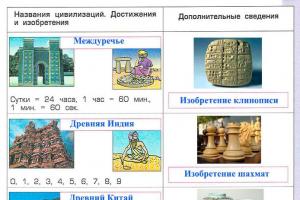Chromium forms three oxides: CrO, Cr 2 O 3, CrO 3.
Chromium (II) oxide CrO is a pyrophoric black powder. Has basic properties.
In redox reactions it behaves as a reducing agent:
CrO is obtained by decomposition of chromium carbonyl Cr(CO) 6 in vacuum at 300°C.
Chromium (III) oxide Cr 2 O 3 is a refractory green powder. It is close to corundum in hardness, which is why it is included in polishing agents. Formed by the interaction of Cr and O 2 at high temperatures. In the laboratory, chromium(III) oxide can be prepared by heating ammonium dichromate:
(N -3 H 4) 2 Cr +6 2 O 7 =Cr +3 2 O 3 +N 0 2 +4H 2 O
Chromium(III) oxide has amphoteric properties. When interacting with acids, chromium (III) salts are formed: Cr 2 O 3 +3H 2 SO 4 =Cr 2 (SO 4) 3 +3H 2 O
When interacting with alkalis in the melt, chromium (III) compounds are formed - chromites (in the absence of oxygen): Cr 2 O 3 + 2NaOH = 2NaCrO 2 + H 2 O
Chromium(III) oxide is insoluble in water.
In redox reactions, chromium(III) oxide behaves as a reducing agent:

Chromium (VI) oxide CrO 3 - chromic anhydride, is a dark red needle-shaped crystals. When heated to about 200°C, it decomposes:
4CrO 3 =2Cr 2 O 3 +3O 2
Easily dissolves in water, being acidic in nature, it forms chromic acids. With excess water, chromic acid H 2 CrO 4 is formed:
CrO 3 +H 2 O=H 2 CrO 4
At a high concentration of CrO 3, dichromic acid H 2 Cr 2 O 7 is formed:
2CrO 3 +H 2 O=H 2 Cr 2 O 7
which, when diluted, turns into chromic acid:
H 2 Cr 2 O 7 +H 2 O=2H 2 CrO 4
Chromic acids exist only in aqueous solution; none of these acids are isolated in a free state. However, their salts are very stable.
Chromium(VI) oxide is a strong oxidizing agent:
3S+4CrO 3 =3SO 2 +2Cr 2 O 3
Oxidizes iodine, sulfur, phosphorus, coal, turning into Cr 2 O 3. CrO 3 is obtained by the action of an excess of concentrated sulfuric acid on a saturated aqueous solution of sodium dichromate: Na 2 Cr 2 O 7 +2H 2 SO 4 =2CrO 3 +2NaHSO 4 +H 2 O It should be noted that chromium (VI) oxide is highly toxic.
Several chemical compounds consisting of two simple elements - Cr and O - belong to the class of inorganic compounds - oxides. Their common name is chromium oxide; then in parentheses it is customary to indicate the valence of the metal in Roman numerals. Their other names and chemical formulas:
- chromium (II) oxide - chromium oxide, CrO;
- chromium (III) oxide - chrome green, chromium sesquioxide, Cr2O3;
- chromium (IV) oxide - chromium oxide, CrO2;
- chromium (VI) oxide - chromium anhydride, chromium trioxide, CrO3.
The compound in which the metal is hexavalent is the highest chromium oxide. This is an odorless solid substance, which in appearance is (they dissolve in air due to strong hygroscopicity). Molar mass - 99.99 g/mol. Density at 20 °C is 2.70 g/cm³. Melting point - 197 °C, boiling point - 251 °C. At 0 °C, 61.7 g/100 dissolves in water, at 25 °C - 63 g/100 ml, at 100 °C - 67.45 g/100 ml. The oxide also dissolves in sulfuric acid (this is a chromic mixture that is used in laboratory practice for washing chemical glassware) and ethyl alcohol, ethyl ether, acetic acid, and acetone. At 450 °C it decomposes to Cr2O3.
Chromium (VI) oxide is used in the electrolysis process (to obtain pure chromium), for chromating galvanized products, in electrolytic chrome plating, as a strong oxidizing agent (for the production of indigo and isatin). chromium is used to detect alcohol in exhaled air. The interaction proceeds according to the following scheme: 4CrO3 + 6H2SO4 + 3C2H5OH → 2Cr2(SO4)3 + 3CH3COOH + 9H2O. The presence of alcohol is indicated by a change in the color of the solution (it turns green).
Chromium (VI) oxide, like all compounds of hexavalent Cr, is a strong poison (lethal dose - 0.1 g). Due to its high activity, CrO3 causes fire (with explosions) upon contact with them. Despite its low volatility, higher chromium oxide is dangerous if inhaled, as it causes lung cancer. Upon contact with skin (even if removed quickly), it causes irritation, dermatitis, eczema, and provokes the development of cancer.
Oxide with tetravalent chromium CrO2 in appearance is a solid in the form of black tetrahedral ferromagnetic crystals. Chromium oxide 4 has a molar mass of 83.9949 g/mol and a density of 4.89 g/cm³. The substance melts, simultaneously decomposing, at a temperature of 375 ° C. Does not dissolve in water. Used in magnetic recording media as a working substance. With the rise in popularity of CDs and DVDs, the use of chromium(IV) oxide has decreased. It was first synthesized in 1956 by EI DuPont chemist Norman L. Cox by decomposing chromium trioxide in the presence of water at a temperature of 640 °C and a pressure of 200 MPa. DuPont is produced under license by Sony in Japan and BASF in Germany.
Chromium oxide 3 Cr2O3 is a solid, finely crystalline substance of light to dark green color. The molar mass is 151.99 g/mol. Density - 5.22 g/cm³. Melting point - 2435 °C, boiling point - 4000 °C. The refractive index of the pure substance is 2.551. This oxide does not dissolve in water, alcohol, acetone, or acid. Since its density approaches the density of corundum, it is introduced into polishing compositions (for example, GOI paste). It is one of chromium which is used as a pigment. It was first obtained using secret technology in 1838 in the form of a transparent hydrated form. It occurs in nature in the form of chromium iron ore FeO.Cr2O3.
Divalent chromium oxide is a black or red solid with a melting point of 1550 °C. Melts with decomposition. Molar mass - 67.996 g/mol. Chromium (II) oxide, which is red in color, is not pyrophoric, but the same substance, which is black in color, is pyrophoric. The powder spontaneously ignites in air, so it can only be stored under a layer of water, since it does not interact with it. It is very difficult to obtain black chromium oxide in its pure form.
Chromium oxides with lower valency are characterized by basic properties, while oxides with higher valency are characterized by acidic properties.
"National Research Tomsk Polytechnic University"
Institute of Natural Resources Geoecology and Geochemistry
Chromium
By discipline:
Chemistry
Completed:
student of group 2G41 Tkacheva Anastasia Vladimirovna 10/29/2014
Checked:
teacher Stas Nikolay Fedorovich
Position in the periodic table
Chromium- element of the side subgroup of the 6th group of the 4th period of the periodic system of chemical elements of D. I. Mendeleev with atomic number 24. Denoted by the symbol Cr(lat. Chromium). Simple substance chromium- hard metal of bluish-white color. Chrome is sometimes classified as a ferrous metal.
Atomic structure
17 Cl)2)8)7 - atomic structure diagram
1s2s2p3s3p - electronic formula
The atom is located in the III period, and has three energy levels
The atom is located in group VII, in the main subgroup - at the outer energy level 7 electrons
Element properties
Physical properties
Chrome is a white shiny metal with a cubic body-centered lattice, a = 0.28845 nm, characterized by hardness and brittleness, with a density of 7.2 g/cm 3, one of the hardest pure metals (second only to beryllium, tungsten and uranium), with a melting point of 1903 degrees. And with a boiling point of about 2570 degrees. C. In air, the surface of chromium is covered with an oxide film, which protects it from further oxidation. Adding carbon to chromium further increases its hardness.
Chemical properties
Chromium is an inert metal under normal conditions, but when heated it becomes quite active.
Interaction with non-metals
When heated above 600°C, chromium burns in oxygen:
4Cr + 3O 2 = 2Cr 2 O 3.
Reacts with fluorine at 350°C, with chlorine at 300°C, with bromine at red heat, forming chromium (III) halides:
2Cr + 3Cl2 = 2CrCl3.
Reacts with nitrogen at temperatures above 1000°C to form nitrides:
2Cr + N 2 = 2CrN
or 4Cr + N 2 = 2Cr 2 N.
2Cr + 3S = Cr 2 S 3.
Reacts with boron, carbon and silicon to form borides, carbides and silicides:
Cr + 2B = CrB 2 (possible formation of Cr 2 B, CrB, Cr 3 B 4, CrB 4),
2Cr + 3C = Cr 2 C 3 (possible formation of Cr 23 C 6, Cr 7 B 3),
Cr + 2Si = CrSi 2 (possible formation of Cr 3 Si, Cr 5 Si 3, CrSi).
Does not interact directly with hydrogen.
Interaction with water
When finely ground and hot, chromium reacts with water to form chromium(III) oxide and hydrogen:
2Cr + 3H 2 O = Cr 2 O 3 + 3H 2
Interaction with acids
In the electrochemical voltage series of metals, chromium is located before hydrogen; it displaces hydrogen from solutions of non-oxidizing acids:
Cr + 2HCl = CrCl 2 + H 2;
Cr + H 2 SO 4 = CrSO 4 + H 2.
In the presence of atmospheric oxygen, chromium (III) salts are formed:
4Cr + 12HCl + 3O 2 = 4CrCl 3 + 6H 2 O.
Concentrated nitric and sulfuric acids passivate chromium. Chromium can dissolve in them only with strong heating; chromium (III) salts and acid reduction products are formed:
2Cr + 6H 2 SO 4 = Cr 2 (SO 4) 3 + 3SO 2 + 6H 2 O;
Cr + 6HNO 3 = Cr(NO 3) 3 + 3NO 2 + 3H 2 O.
Interaction with alkaline reagents
Chromium does not dissolve in aqueous solutions of alkalis; it slowly reacts with alkali melts to form chromites and release hydrogen:
2Cr + 6KOH = 2KCrO 2 + 2K 2 O + 3H 2.
Reacts with alkaline melts of oxidizing agents, for example potassium chlorate, and chromium is converted into potassium chromate:
Cr + KClO 3 + 2KOH = K 2 CrO 4 + KCl + H 2 O.
Recovery of metals from oxides and salts
Chromium is an active metal, capable of displacing metals from solutions of their salts: 2Cr + 3CuCl 2 = 2CrCl 3 + 3Cu.
Properties of a simple substance
Stable in air due to passivation. For the same reason, it does not react with sulfuric and nitric acids. At 2000 °C it burns to form green chromium(III) oxide Cr 2 O 3, which has amphoteric properties.
Compounds of chromium with boron (borides Cr 2 B, CrB, Cr 3 B 4, CrB 2, CrB 4 and Cr 5 B 3), with carbon (carbides Cr 23 C 6, Cr 7 C 3 and Cr 3 C 2), were synthesized. with silicon (silicides Cr 3 Si, Cr 5 Si 3 and CrSi) and nitrogen (nitrides CrN and Cr 2 N).
Cr(+2) compounds
The oxidation state +2 corresponds to the basic oxide CrO (black). Cr 2+ salts (blue solutions) are obtained by reducing Cr 3+ salts or dichromates with zinc in an acidic medium (“hydrogen at the time of release”):
All these Cr 2+ salts are strong reducing agents, to the point that when standing, they displace hydrogen from water. Oxygen in the air, especially in an acidic environment, oxidizes Cr 2+, as a result of which the blue solution quickly turns green.
Brown or yellow hydroxide Cr(OH) 2 precipitates when alkalis are added to solutions of chromium(II) salts.
Chromium dihalides CrF 2, CrCl 2, CrBr 2 and CrI 2 were synthesized
Cr(+3) compounds
The oxidation state +3 corresponds to the amphoteric oxide Cr 2 O 3 and hydroxide Cr (OH) 3 (both green). This is the most stable oxidation state of chromium. Chromium compounds in this oxidation state range in color from dirty purple (3+ ion) to green (anions are present in the coordination sphere).
Cr 3+ is prone to the formation of double sulfates of the form M I Cr(SO 4) 2 12H 2 O (alum)
Chromium (III) hydroxide is obtained by reacting ammonia with solutions of chromium (III) salts:
Cr+3NH+3H2O→Cr(OH)↓+3NH
You can use alkali solutions, but in their excess a soluble hydroxo complex is formed:
Cr+3OH→Cr(OH)↓
Cr(OH)+3OH→
By fusing Cr 2 O 3 with alkalis, chromites are obtained:
Cr2O3+2NaOH→2NaCrO2+H2O
Uncalcined chromium(III) oxide dissolves in alkaline solutions and acids:
Cr2O3+6HCl→2CrCl3+3H2O
When chromium(III) compounds are oxidized in an alkaline environment, chromium(VI) compounds are formed:
2Na+3HO→2NaCrO+2NaOH+8HO
The same thing happens when chromium (III) oxide is fused with alkali and oxidizing agents, or with alkali in air (the melt acquires a yellow color):
2Cr2O3+8NaOH+3O2→4Na2CrO4+4H2O
Chromium compounds (+4)[
By careful decomposition of chromium(VI) oxide CrO 3 under hydrothermal conditions, chromium(IV) oxide CrO 2 is obtained, which is ferromagnetic and has metallic conductivity.
Among chromium tetrahalides, CrF 4 is stable, chromium tetrachloride CrCl 4 exists only in vapors.
Chromium compounds (+6)
The oxidation state +6 corresponds to the acidic chromium (VI) oxide CrO 3 and a number of acids, between which there is an equilibrium. The simplest of them are chromium H 2 CrO 4 and dichromium H 2 Cr 2 O 7 . They form two series of salts: yellow chromates and orange dichromates, respectively.
Chromium (VI) oxide CrO 3 is formed by the interaction of concentrated sulfuric acid with solutions of dichromates. A typical acidic oxide, when interacting with water it forms strong unstable chromic acids: chromic H 2 CrO 4, dichromic H 2 Cr 2 O 7 and other isopoly acids with the general formula H 2 Cr n O 3n+1. An increase in the degree of polymerization occurs with a decrease in pH, that is, an increase in acidity:
2CrO+2H→Cr2O+H2O
But if an alkali solution is added to the orange solution of K 2 Cr 2 O 7, the color turns yellow again as K 2 CrO 4 chromate is formed again:
Cr2O+2OH→2CrO+HO
It does not reach a high degree of polymerization, as occurs with tungsten and molybdenum, since polychromic acid decomposes into chromium(VI) oxide and water:
H2CrnO3n+1→H2O+nCrO3
The solubility of chromates roughly corresponds to the solubility of sulfates. In particular, yellow barium chromate BaCrO 4 precipitates when barium salts are added to both chromate and dichromate solutions:
Ba+CrO→BaCrO↓
2Ba+CrO+H2O→2BaCrO↓+2H
The formation of blood-red, slightly soluble silver chromate is used to detect silver in alloys using assay acid.
Chromium pentafluoride CrF 5 and low-stable chromium hexafluoride CrF 6 are known. Volatile chromium oxyhalides CrO 2 F 2 and CrO 2 Cl 2 (chromyl chloride) were also obtained.
Chromium(VI) compounds are strong oxidizing agents, for example:
K2Cr2O7+14HCl→2CrCl3+2KCl+3Cl2+7H2O
The addition of hydrogen peroxide, sulfuric acid and an organic solvent (ether) to dichromates leads to the formation of blue chromium peroxide CrO 5 L (L is a solvent molecule), which is extracted into the organic layer; This reaction is used as an analytical one.
3.2.1; 3.3.1; 3.7.1; 3.8.1
3.2.1, 3.3.1; 3.4; 3.5
5. The validity period was lifted according to Protocol No. 3-93 of the Interstate Council for Standardization, Metrology and Certification (IUS 5-6-93)
6. REISSUE (November 1998) with Amendments No. 1, 2, approved in March 1984, December 1988 (IUS 7-84, 3-89)
This standard applies to chromium (VI) oxide (chromic anhydride), which is dark brown-red needle-shaped or prismatic crystals; soluble in water, hygroscopic.
Formula: CrO.
Molecular mass (according to international atomic masses 1971) - 99.99.
1. TECHNICAL REQUIREMENTS
1. TECHNICAL REQUIREMENTS
1.1. Chromium (VI) oxide must be manufactured in accordance with the requirements of this standard according to technological regulations approved in the prescribed manner.
(Changed edition, Amendment No. 2).
1.2. In terms of chemical indicators, chromium (VI) oxide must comply with the standards specified in Table 1.
Table 1
Indicator name | ||
Clean for analysis | Clean (h) |
|
1. Mass fraction of chromium (VI) oxide (CrO), %, not less | ||
2. Mass fraction of water-insoluble substances, %, no more | ||
3. Mass fraction of nitrates (NO), %, no more | Not standardized |
|
4. Mass fraction of sulfates (SO), %, no more | ||
5. Mass fraction of chlorides (Cl), % ,
no more | ||
6. Mass fraction of the sum of aluminum, barium, iron and calcium (Al + Ba + Fe + Ca), % ,
no more | ||
7. Mass fraction of the sum of potassium and sodium (K ± Na), %, no more | ||
2. ACCEPTANCE RULES
2.1. Acceptance rules - according to GOST 3885.
2.2. The manufacturer determines the mass fraction of nitrates and the amount of aluminum, barium, iron and calcium in every 10th batch.
(Introduced additionally, Amendment No. 2).
3. METHODS OF ANALYSIS
3.1a. General instructions for conducting analysis - according to GOST 27025.
When weighing, use laboratory scales in accordance with GOST 24104 * 2nd accuracy class with a maximum weighing limit of 200 g and 3rd accuracy class with a maximum weighing limit of 500 g or 1 kg or 4th accuracy class with a maximum weighing limit of 200 g.
_______________
* GOST 24104-2001 is valid. - Note "CODE".
It is allowed to use imported utensils with an accuracy class and reagents with a quality no lower than domestic ones.
3.1. Samples are taken according to GOST 3885.
The weight of the average sample must be at least 150 g.
3.2. Determination of the mass fraction of chromium (VI) oxide
3.1a-3.2. (Changed edition, Amendment No. 2).
3.2.1. Reagents, solutions and glassware
Distilled water according to GOST 6709.
Potassium iodide according to GOST 4232, solution with a mass fraction of 30%, freshly prepared.
Hydrochloric acid according to GOST 3118.
Soluble starch according to GOST 10163, solution with a mass fraction of 0.5%.
GOST 27068, solution concentration (NaSO·5HO) = 0.1 mol/dm (0.1 N); prepared according to GOST 25794.2.
Burette with a capacity of 50 cm with a division value of 0.1 cm.
Flask Kn-1-500-29/32 THS according to GOST 25336.
Flask 2-500-2 according to GOST 1770.
Pipettes with a capacity of 2, 10 and 25 cm.
Stopwatch.
Cylinder 1(3)-100 according to GOST 1770.
(Changed edition, Amendment No. 1,
3.2.2. Carrying out analysis
About 2.5000 g of the drug is placed in a volumetric flask, dissolved in a small amount of water, the volume of the solution is adjusted to the mark with water and mixed thoroughly.
25 cm of the resulting solution is transferred to a conical flask, 100 cm of water, 5 cm of hydrochloric acid, 10 cm of potassium iodide solution are added, mixed and left in the dark for 10 minutes. Then wash off the plug with water, add 100 cm of water and titrate the released iodine with a solution of 5-aqueous sodium sulphate, adding 1 cm of starch solution at the end of the titration until the color turns green.
(Changed edition, Amendment No. 2).
3.2.3. Processing the results
The mass fraction of chromium oxide () in percent is calculated using the formula
where is the volume of a solution of 5-aqueous sodium sulfate with a concentration of exactly (NaSO·5HO) = 0.1 mol/dm (0.1 N) used for titration, cm;
Sample weight, g;
0.003333 - mass of chromium (VI) oxide corresponding to 1 cm of solution of 5-aqueous sodium sulfate with a concentration of exactly (NaSO 5HO) = 0.1 mol/dm (0.1 N), g.
At the same time, a control experiment is carried out with the same quantities of solutions of potassium iodide and hydrochloric acid and, if necessary, an appropriate correction is made to the result of the determination.
The result of the analysis is taken as the arithmetic mean of the results of two parallel determinations, the absolute discrepancy between which does not exceed the permissible discrepancy of 0.3%.
The permissible absolute total error of the analysis result is ±0.5% with a confidence level of =0.95.
(Modified edition, From
m. N 1, 2).
3.3. Determination of the mass fraction of water-insoluble substances
3.3.1. Reagents and glassware
Distilled water according to GOST 6709.
Filter crucible according to GOST 25336 type TF POR 10 or TF POR 16.
Glass V-1-250 THS according to GOST 25336.
Cylinder 1(3)-250 according to GOST 1770.
3.3.2. Carrying out analysis
30.00 g of the drug is placed in a glass and dissolved in 100 cm of water. The glass is covered with a watch glass and kept for 1 hour in a water bath. Then the solution is filtered through a filter crucible, previously dried to constant weight and weighed. The result of weighing the crucible in grams is recorded accurate to the fourth decimal place. The residue on the filter is washed with 150 cm of hot water and dried in an oven at 105-110 ° C until constant weight.
The preparation is considered to comply with the requirements of this standard if the mass of the residue after drying does not exceed:
for the drug pure for analysis - 1 mg,
for the drug pure - 3 mg.
Permissible relative total error of the analysis result for an analytical grade drug. ±35%, for the drug h. ±20% with confidence probability =0.95.
3.3.1, 3.3.2. (Changed edition, Amendment No. 2).
3.4. Determination of the mass fraction of nitrates
The determination is carried out according to GOST 10671.2. In this case, 1.50 g of the drug is placed in a Kn-2-100-34(50) TCS flask (GOST 25336), 100 cm of water is added, stirred until dissolved, 1.5 cm of concentrated sulfuric acid is added, carefully drop by drop while stirring 2 cm of rectified technical premium ethyl alcohol (GOST 18300) and heated in a boiling water bath for 15 minutes.
20 cm of water is added to the hot solution, and then, with stirring, about 14 cm of ammonia solution with a mass fraction of 10% (GOST 3760) until the chromium is completely deposited.
The contents of the flask are slowly heated to boiling and boiled for 10 minutes; to prevent ejection, pieces of unglazed porcelain and a glass rod are placed in the flask. Then the liquid is filtered through an ash-free “blue ribbon” filter using a laboratory funnel with a diameter of 75 mm (GOST 25336) (the filter is pre-washed 4-5 times with hot water), the filtrate is collected in a conical flask with a capacity of 100 cm with a mark at 60 cm. Sediment on the filter washed three times with hot water, collecting the washing water in the same flask. The resulting solution is heated to a boil, boiled for 15 minutes, cooled, the volume of the solution is adjusted to the mark with water and mixed.
The solution is saved for the determination of chlorides according to clause 3.6.
5 cm of the resulting solution (corresponding to 0.125 g of the drug) is placed in a conical flask with a capacity of 50 cm, 5 cm of water is added and then the determination is carried out using the method using indigo carmine.
The drug is considered to comply with the requirements of this standard if the color of the analyzed solution observed after 5 minutes is not weaker than the color of a solution prepared at the same time and containing in the same volume:
for the drug pure for analysis 0.005 mg NO,
1 cm sodium chloride solution, 1 cm indigo carmine solution and 12 cm concentrated sulfuric acid
acids.
3.5. Determination of the mass fraction of sulfates
The determination is carried out according to GOST 10671.5.
In this case, 0.50 g of the drug is placed in a glass with a capacity of 50 cm and dissolved in 5 cm of water. The solution is transferred to a separating funnel with a capacity of 50 cm (GOST 25336), 5 cm of concentrated hydrochloric acid, 10 cm of tributyl phosphate are added and shaken.
After separation of the mixture, the aqueous layer is transferred to another similar separating funnel and, if necessary, the treatment of the aqueous layer with 5 cm of tributyl phosphate is repeated. The aqueous layer is separated into a separatory funnel and washed with 5 cm of ether for anesthesia. After separation, the aqueous solution is transferred to an evaporation cup (GOST 9147), placed in an electric water bath and the solution is evaporated to dryness.
The residue is dissolved in 10 cm of water, transferred quantitatively to a conical flask with a capacity of 50 cm (with a mark at 25 cm), the volume of the solution is adjusted to the mark with water, mixed and then determined by the visual nephelometric method.
The drug is considered to comply with the requirements of this standard if the observed opalescence of the analyzed solution is not more intense than the opalescence of a solution prepared simultaneously with the analyzed solution and containing in the same volume:
for the drug pure for analysis - 0.02 mg SO,
for the drug pure - 0.05 mg SO,
1 cm of hydrochloric acid solution with a mass fraction of 10%, 3 cm of starch solution and 3 cm of chloride solution
go barium.
3.6. Determination of the mass fraction of chlorides
The determination is carried out according to GOST 10671.7. In this case, 40 cm of the solution obtained according to clause 3.4. (correspond to 1 g of the drug), place in a conical flask with a capacity of 100 cm3 and, if the solution is cloudy, add 0.15 cm3 of concentrated sulfuric acid (GOST 4204) to the analyzed solution and the reference solution, and then the determination is carried out phototurbidimetrically (in a volume of 50 cm3, measuring optical density of solutions in cuvettes with a light-absorbing layer thickness of 100 mm) or by the visual nephelometric method.
The drug is considered to comply with the requirements of this standard if the mass of chlorides does not exceed:
for the drug pure for analysis - 0.01 mg,
for the drug pure - 0.02 mg.
At the same time, under the same conditions, a control experiment is carried out to determine the mass fraction of chlorides in the quantities of alcohol and ammonia solution used for analysis, and if they are detected, an amendment is made to the analysis results.
In case of disagreement in the assessment of the mass fraction of chlorides, the determination is carried out using the phototurbidimetric method.
3.4-3.6. (Changed edition, Amendment No. 1, 2).
3.7. Determination of the mass fraction of aluminum, barium, iron and calcium
3.7.1. Equipment, reagents and solutions
ISP-30 spectrograph with a three-lens slit illumination system and a three-stage attenuator.
AC arc generator type DG-1 or DG-2.
Flint rectifier type VAZ-275/100.
Microphotometer type MF-2 or MF-4.
Muffle furnace.
Stopwatch.
Spectroprojector type PS-18.
Mortars made of organic glass and agate.
Porcelain crucible according to GOST 9147.
Torsion bar scales VT-500 with a division value of 1 mg or others with similar accuracy.
Graphitized carbons for spectral analysis, special purity grade. 7-3 (carbon electrodes) with a diameter of 6 mm; The upper electrode is sharpened into a cone, the lower one has a cylindrical channel with a diameter of 3 mm and a depth of 4 mm.
Powdered graphite, special purity, according to GOST 23463.
Spectral photographic plates type SP-I with photosensitivity 3-5 units. for aluminum, barium and calcium and spectral type SP-III, photosensitivity 5-10 units. for iron.
Ammonium dichromate according to GOST 3763.
Chromium (III) oxide obtained from chromium (VI) oxide according to this standard or ammonium dichromate, with a minimum content of detectable impurities, the determination of which is carried out by the method of additives under the conditions of this method; if impurities are present, they are taken into account when constructing a calibration graph.
Aluminum oxide for spectral analysis, chemical grade.
Barium oxide, special purity grade. 10-1.
Iron (III) oxide, special grade grade. 2-4.
Calcium oxide, special grade grade. 6-2.
Ammonium chloride according to GOST 3773.
Distilled water according to GOST 6709.
Hydroquinone (paradioxybenzene) according to GOST 19627.
Potassium bromide according to GOST 4160.
Metol (4-methylaminophenol sulfate) according to GOST 25664.
Sodium sulfite 7-water.
Sodium sulfate (sodium thiosulfate) 5-water according to GOST 27068.
Sodium carbonate according to GOST 83.
Sodium carbonate 10-water according to GOST 84.
Metolhydroquinone developer; prepare as follows: solution A-2 g of metol, 10 g of hydroquinone and 104 g of 7-aqueous sodium sulfite are dissolved in water, the volume of the solution is adjusted to 1 dm3 with water, stirred and, if the solution is cloudy, it is filtered; solution B-16 g of sodium carbonate (or 40 g of 10-aqueous sodium carbonate) and 2 g of potassium bromide are dissolved in water, the volume of the solution is adjusted to 1 dm3 with water, mixed and, if the solution is cloudy, it is filtered, then solutions A and B are mixed in equal volumes.
Fast-acting fixer; prepare as follows: 500 g of 5-aqueous sodium sulphate and 100 g of ammonium chloride are dissolved in water, the volume of the solution is adjusted to 2 dm, mixed and, if the solution is cloudy, it is filtered.
Rectified technical ethyl alcohol according to GOST 18300 of the highest grade.
(Changed edition, Amendment No. 1, 2).
3.7.2. Preparing for analysis
3.7.2.1. Preparation of the analyzed sample
0.200 g of the drug is placed in a porcelain crucible, dried on an electric stove and calcined in a muffle furnace at 900 °C for 1 hour.
The resulting chromium (III) oxide is ground in an agate mortar with powdered graphite in a ratio of 1:2.
3.7.2.2. Preparation of samples for constructing a calibration graph
Samples are prepared on the basis of chromium (III) oxide obtained from chromium (VI) oxide with a minimum content of detectable impurities. To obtain the base, a sample of chromium (VI) oxide is placed in a porcelain crucible, dried on an electric stove and calcined in a muffle furnace at 900 °C for 1 hour (it is possible to prepare samples based on chromium (III) oxide obtained from ammonium dichromate).
A lead sample with a mass fraction of each impurity of 0.32% is prepared by grinding 0.0458 g of iron (III) oxide, 0.0605 g of aluminum oxide, 0.0448 g of calcium oxide, 0.0357 g of barium oxide and 9.8132 g of chromium oxide (III) in an organic glass or agate mortar with 5 cm of ethyl alcohol for 1 hour, then dried under an infrared lamp or in a drying oven and the mixture was ground for 30 minutes.
By mixing appropriate amounts of the main sample or previous ones with the base, samples with a lower mass fraction of impurities indicated in Table 2 are obtained.
table 2
Sample number | Mass fraction of each impurity (Al, Ba, Fe, Ca) |
Each sample is mixed with powdered graphite in a ratio of 1:2.
3.7.2.1, 3.7.2.2. (Changed edition, Amendment No. 2).
3.7.3. Carrying out analysis
The analysis is carried out in a direct current arc under the conditions specified below.
Current strength, A | |
Slot width, mm | |
Height of the diaphragm on the middle lens of the condenser system, mm | |
Exposure, s |
Before taking spectrograms, the electrodes are fired in a direct current arc at a current strength of 10-12 A for 30 s.
After firing the electrodes, the analyzed sample or sample is introduced into the channel of the lower electrode (anode) to construct a calibration graph. The mass of the sample is determined by the volume of the channel. Light the arc and take a spectrogram. The spectra of the analyzed sample and samples are taken on one photographic plate at least three times, each time placing a new pair of electrodes. The slot is opened before the arc is ignited.
The photographic plate with the recorded spectra is developed, fixed, washed in running water and dried in air.
3.7.4. Processing the results
Photometry of analytical spectral lines of determined impurities and comparison lines is carried out using a logarithmic scale.
Analytical line | Comparison line |
|
VA-233.527 | ||
Cr-391.182 nm |
||
For each analytical pair, calculate the blackening difference ()
where is the blackening of the impurity line;
- blackening of the comparison line or background.
Based on the three values of the difference in blackening, the arithmetic mean value () is determined for each element being determined in the analyzed sample and the sample for constructing a calibration graph.
Based on the sample values for constructing calibration graphs, a calibration graph is constructed for each element being determined, plotting logarithms of concentration on the abscissa axis, and arithmetic average values of the blackening difference on the ordinate axis.
The mass fraction of each impurity is determined from the graph and the result is multiplied by 0.76.
The result of the analysis is taken as the arithmetic mean of the results of three parallel determinations, the relative discrepancy between the most different values of which does not exceed the permissible discrepancy of 50%.
The permissible relative total error of the analysis result is ±20% with a confidence level of =0.95.
(Changed edition, Amendment No. 2).
3.8. Determination of the mass fraction of the sum of sodium and potassium
3.8.1. Instruments, reagents, solutions and glassware
Flame photometer or spectrophotometer based on the ISP-51 spectrograph with the FEP-1 attachment, with a corresponding photomultiplier, or the Saturn spectrophotometer. It is permissible to use other devices that provide similar sensitivity and accuracy.
Propane-butane.
Compressed air for powering instrumentation.
Burner.
Spray.
Distilled water according to GOST 6709, re-distilled in a quartz distiller, or demineralized water.
Solutions containing Na and K; prepared according to GOST 4212, by appropriate dilution and mixing a solution with a concentration of Na and K of 0.1 mg/cm is obtained - solution A.
Chromium (VI) oxide according to this standard, analytical grade, with the established method of adding Na and K content (solution with a mass fraction of 10%) - solution B.
3.8.2. Preparing for analysis
3.8.2.1. Preparation of test solutions
1.00 g of the drug is dissolved in water, transferred quantitatively to a volumetric flask, the volume of the solution is adjusted to the mark and mixed thoroughly.
3.8.2.2. Preparation of reference solutions
Six volumetric flasks are filled with 10 cm of solution B and the volumes of solution A indicated in Table 3.
Table 3
Reference solution number | Volume of solution A, cm | Mass of each element (K, Na) introduced into 100 cm of reference solution, mg | Mass fraction of each impurity (K, Na) in terms of the drug, % |
The solutions are mixed, the volume of the solutions is adjusted to the mark and mixed again.
3.8.2.1, 3.8.2.2. (Changed edition, Amendment No. 2).
3.8.3. Carrying out analysis
At least two portions of the drug are taken for analysis.
The emission intensity of the resonance lines of sodium 589.0-589.6 nm and potassium 766.5 nm in the gas-air flame spectrum is compared when the analyzed solutions and reference solutions are introduced into it.
After preparing the device for analysis, photometry of the analyzed solutions and reference solutions is carried out in order of increasing mass fraction of impurities. Then photometry is carried out in the reverse order, starting with the maximum impurity content, and the arithmetic mean value of the readings is calculated for each solution, taking into account as a correction the reading obtained when photometry of the first reference solution. After each measurement, water is sprayed.
3.8.4. Processing the results
Based on the data obtained for reference solutions, a calibration graph is constructed, plotting the radiation intensity values on the ordinate axis, the mass fraction of sodium and potassium impurities in terms of the drug on the abscissa axis.
The mass fraction of sodium and potassium is found according to the graph.
The result of the analysis is taken as the arithmetic mean of the results of two parallel determinations, the relative discrepancy between which does not exceed the permissible discrepancy of 30%.
The permissible relative total error of the analysis result is ±15% with a confidence level of =0.95.
(Changed edition, Amendment No. 2).
4. PACKAGING, LABELING, TRANSPORTATION AND STORAGE
4.1. The drug is packaged and labeled in accordance with GOST 3885.
Type and type of container: 2-4, 2-5, 2-6, 11-6.
Packing group: V, VI, VII.
The product used as a technological raw material is packaged in liner bags made of thin polymer film, placed in metal drums of the type BTPB-25, BTPB-50 (GOST 5044) with a net weight of up to 70 kg.
The container is marked with a danger sign in accordance with GOST 19433 (class 5, subclass 5.1, classification code 5152).
(Changed edition, Amendment No. 2).
4.2. The drug is transported by all modes of transport in accordance with the cargo transportation rules in force for this type of transport.
4.3. The drug is stored in the manufacturer's packaging in covered warehouses.
5. MANUFACTURER WARRANTY
5.1. The manufacturer guarantees the compliance of chromium (VI) oxide with the requirements of this standard, subject to the conditions of transportation and storage.
5.2. Guaranteed shelf life - 3 years from the date of manufacture.
Sec. 5. (Changed edition, Amendment No. 2).
6. SAFETY REQUIREMENTS
6.1. Chromium(VI) oxide is poisonous. The maximum permissible concentration in the air of the working area of industrial premises is 0.01 mg/m (1st hazard class). When the concentration increases, it can cause acute and chronic poisoning with damage to vital organs and systems.
(Changed edition, Amendment No. 2).
6.2. When working with the drug, you must use dust respirators, rubber gloves and safety glasses, and also observe personal hygiene rules; do not allow the drug to enter the body.
6.3. Maximum sealing of process equipment must be ensured.
6.4. Premises in which work with the drug is carried out must be equipped with general supply and exhaust ventilation, and places of the greatest dust must be equipped with shelters with local exhaust ventilation. The drug should be analyzed in a laboratory fume hood.
(Changed edition, Amendment No. 2).
6.5. When analyzing a drug using flammable gases, fire safety regulations must be observed.
The text of the document is verified according to:
official publication
M.: IPK Standards Publishing House, 1999








